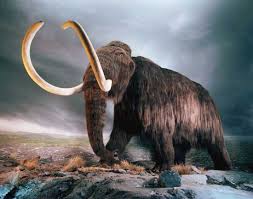
A new research has found evidence to suggest that climate change, rather than hunting, was the main factor that drove the woolly mammoth to extinction.
A DNA analysis shows that the number of creatures began to decrease much earlier than previously thought as the world’s climate changed.
The study also shows that there was a distinct population of mammoth in Europe that died out around 30,000 years ago.
The results have published in the Proceedings of the Royal Society B.
The view many researchers had about woolly mammoths is that they were a hardy, abundant species that thrived during their time on the planet.
But according to the scientist who led the research, Dr. Love Dalen of the Swedish Museum of Natural History, the study shifts that view.
Dr. Love Dalen worked with researchers in London to analyze DNA samples from 300 specimens from woolly mammoths collected by themselves and other groups in earlier studies
The scientists were able to work out how many mammoths existed at any given time from the samples as well as tracing their migration patterns. They looked at the genetic diversity in their samples – the less diverse the lower the population.

They found that the species nearly went extinct 120,000 years ago when the world warmed up for a while. Numbers are thought to have dropped from several million to tens of thousands but numbers recovered as the planet entered another ice age.
The researchers also found that the decline that led to their eventual extinction began 20,000 years ago when the Ice Age was at its height, rather than 14,000 years ago when the world began to warm again as previously thought.
They speculate that it was so cold that the grass on which they fed became scarce. The decline was spurred on as the Ice Age ended, possibly because the grassland on which the creatures thrived was replaced by forests in the south and tundra in the north.
The reason they died out has been a matter of considerable scientific debate. Some have argued that humans hunted them to extinction while others have said that changes in the climate was the main factor.
A criticism of the climate extinction argument is that the world warmed well before the creatures became extinct and so that could not have been the cause.
The new results show that mammoths did indeed nearly go extinct between Ice Ages and so backs the view that climate change was the principal cause for their demise.
These results back a computer simulation of conditions at the time carried out by researchers at Durham University in 2010.
And of course other animals, including humans, became more active after the Ice Age and so competition with other species and hunting may also have been a factor in their extinction, though not the principle cause, argues Prof. Adrian Lister of the NHM.
“During the last ice age, between about 50,000 and 20,000 years ago, there were substantial movements of mammoth populations – European populations being replaced by waves of migration from the east, for example,” he said.
“But from about 20,000 years ago onwards, the population started the dramatic decline that led to its extinction, first on the mainland about 10,000 years ago, and finally on some outlying Arctic islands. The pattern seems to fit forcing by natural climate change: any role of humans in the process has yet to be demonstrated.”
[youtube dUBMXF1_wcI]